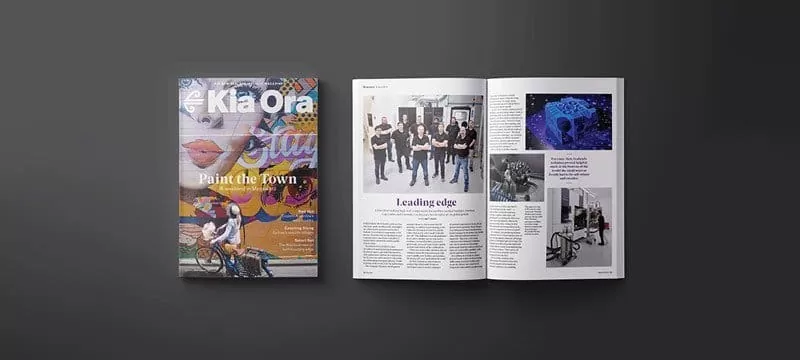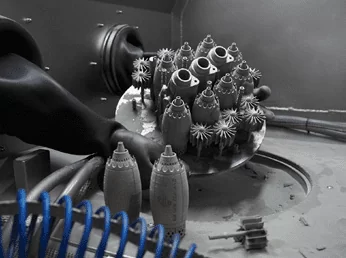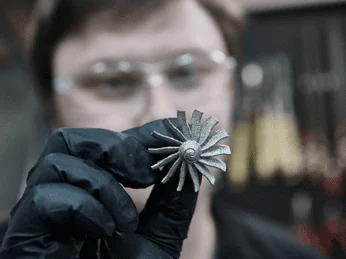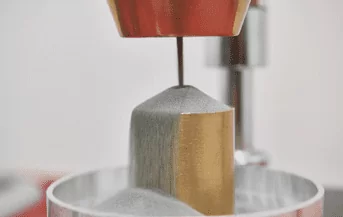



A Kiwi firm making high-tech components for satellites, medical implants, America’s Cup yachts and Formula 1 racing cars, has its sights set on global growth.
SOMEWHERE UP IN Earth’s orbit are four American-made satellites built with highly specialised parts manufactured in New Zealand. Two hundred components, to be precise, 3D-printed by an Auckland-based company that is one of just a handful of organisations around the world capable of such a feat.
Founded in 2014, Zenith Tecnica specialises in manufacturing titanium parts for the aerospace and medical industries, with a glamorous sideline in components for F1 race cars and America’s Cup yachts. In a challenging emerging industry, Zenith is taking on the world, layer by molten layer. The company’s business development manager Bruno Le Razer notes that 3D printing, or additive manufacturing, is hot right now. But much of it involves plastic rather than metal, and is small-scale and one-off.
The challenge is to reach production level, and to do that you not only need a machine, you need facilities, you need a great team, you need to put in place quality systems and achieve all the certifications.
Then you need to find customers who are willing to invest the time and money with you to qualify your facilities and machines. We are part of a very small club in the world.
Bruno Le Razer, Zenith Tecnica

A 3D scan of a test component
Air New Zealand recently formed a partnership with Zenith Tecnica to investigate ways to use the company’s 3D-printed components in its aircraft and ground-based operations. Wayne Thomas, 3D printing and advanced manufacturing project manager for the airline, says Zenith’s story, while not well known at home, is impressive.
They have a very strong reputation internationally in titanium, and a lot of customers in critical, high performance industries such as medical and space. It’s an incredible capability, really, and it’s right here on our doorstep.
Wayne Thomas, Air New Zealand

Titanium blasting and powder recovery

Arcam Q20Plus machines, aerospace-certified to produce large titanium components.
How did they do it? Early on, Zenith invested heavily in Electron Beam Melting (EBM) printers made by Swedish outfit Arcam AB, which is now owned by GE. Compared to other additive manufacturing approaches, EBM printers work by melting and fusing metal powder using an electron beam. It’s a high-energy, high-temperature process that produces strong parts relatively quickly.
For once, New Zealand’s isolation proved helpful to a manufacturing venture: stuck at the bottom of the world, the small team of engineers and other staff at Zenith had to be self-reliant and creative.
We had to think hard about how to use the technology and make it work, and very rapidly we realised that we were unique, that nobody could use the machine the way we were – effectively, we mastered the technology.
At conferences, we talked to machine manufacturers, and they realised we were pretty good. So, by word of mouth, we started to get a few customers.”
Bruno Le Razer, Zenith Tecnica
One is a US-based satellite company – Le Razer won’t say which, only that it’s “one of the largest in the world” – a contract that necessitated achieving aerospace supplier certification, and printing parts to exacting rules that cover every aspect of production, followed by rigorous testing and re-testing. In total, 900 components have been produced so far, “and every component has been accepted”.

Mirror polished wine aerators ready for dispatch

Air New Zealand turbine fan
The company is also producing titanium components for a US-based manufacturer of knee and hip implants (titanium’s advantage is that it is both lightweight and strong). The demands associated with producing for the medical industry are just as uncompromising, according to Le Razer. “There are lots of tests involved, lots of hurdles, but we’ve managed to overcome that.”
Closer to home, Zenith has been collaborating with a cluster of clever New Zealand companies in the human and veterinary medicine sector, including Christchurch-based orthopaedic implant specialists Ossis and veterinary implant innovators OssAbility, both of which take advantage of 3D printing’s ability to customise parts for individual patients.
“That’s where the technology is great, because you can do pretty much whatever you want,” says Le Razer, who also highlights the quick turnaround that makes 3D printing so useful for prototyping. He cites the firm’s work for America’s Cup syndicates.
“When teams are looking to implement new shapes, we can quickly build the parts and they can test them within a week.”
Bruno Le Razer, Zenith Tecnica
In the case of Air New Zealand, it’s the “on demand” quality that looks promising, particularly when it comes to testing new ideas or replacing components in cabin interiors.
A big thing for us is that we’re at the end of a very long logistics chain, in the middle of the Pacific, with many of our manufacturers located on the opposite side of the globe, so the potential to be able to decentralise the manufacturing model has a lot of appeal,” says Wayne Thomas. “We don’t have to order multiple parts and hold them in stock ‘just in case’. Also, we’re starting to look at how this allows us to customise our fleet. That’s important for an airline, to be readily identifiable as Air New Zealand, rather than having a cookie-cutter interior, and this gives us options at the design stage to try out concepts.
Wayne Thomas, Air New Zealand

Arcam Q20Plus machines

Titanium powder flow-rate test
It’s early days, and there are likely to be plenty of other applications for airlines and aircraft manufacturers, as other advantages of 3D printing come to light. For Zenith Tecnica, the next step will be to find new funding and grow. “The opportunity is there,” says Le Razer.
source: Kia Ora – March 2019 – Pages 74-76 – https://www.bauermedia.co.nz/brands/kia-ora/